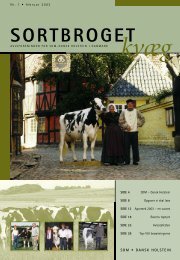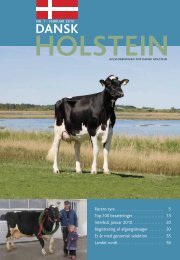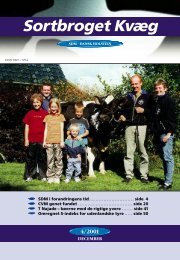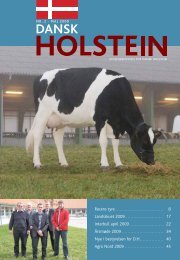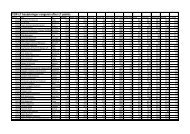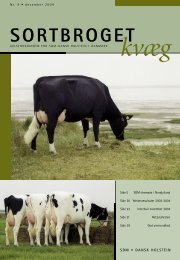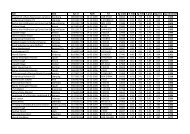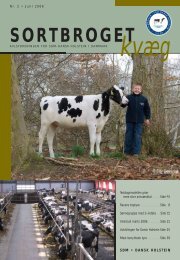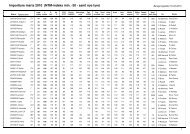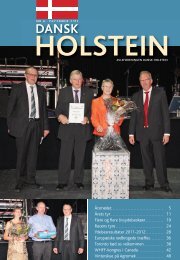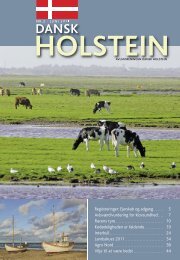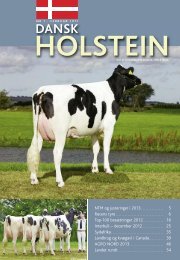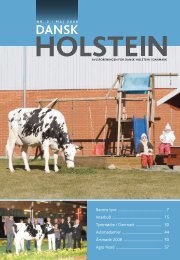2012 WORLD HOLSTEIN CONFERENCE - Dansk Holstein
2012 WORLD HOLSTEIN CONFERENCE - Dansk Holstein
2012 WORLD HOLSTEIN CONFERENCE - Dansk Holstein
You also want an ePaper? Increase the reach of your titles
YUMPU automatically turns print PDFs into web optimized ePapers that Google loves.
SESSION 5: ENSURING FARMSUSTAINABILITYRole of Breed Societies in Sustaining the Industry for FutureGenerationsLUCY ANDREWS-NODEN (UK)Lucy Andrews-Noden comes from a farming family in the heart ofDerbyshire Peak District, United Kingdom. After five years gaining anHigher National Diploma (HND) in Agriculture and Animal Productionand a BSc Honours in Animal Science at Harper Adams UniversityCollege, Lucy took her first appointment as an Animal Breedingand Research Analyst in 2000 at <strong>Holstein</strong> UK —Europe’s largestIndependent Breed Society. Over the past 11 years at <strong>Holstein</strong> UK,Lucy’s job has developed to drive forward all research, genetic andgenomic breed development activities within the Association. Shewas the youngest person to be promoted to an executive positionin 2006. In her current role, Lucy is jointly responsible for all <strong>Holstein</strong>UK Breed Research and Development. She is also the executive for the ‘Centre for Dairy Information’; theUK’s first Central National Database covering 7 UK Major Dairy Breeds and data. Lucy was awarded theTrehane Nuffield Farming Scholarship in 2005, which enabled her to travel the world and study her chosensubject, ‘The Communication of Science and Genetics to Farmers – Bridging the Gaps’. Lucy was appointedthe Chairman of the British Cattle Breeders Club in 2010/2011 where she manages and leads the AnnualWinter Conference of over 300 delegates in Telford, Shropshire during January of this year.There are two vital aspects to Breed Societies worldwide – People and Cows. When these two ingredients mix there isa chemical reaction that is the very essence of the Breed Society. You can’t see it or taste it but you can feel it.Breed Societies need to support two important aspects; generations of people and the generations of the cows theybreed. If you think of the human generation interval as being around 25 years, that’s probably around 4-5 generationsof cows with their impact on the breed and profitability.Breed Societies also help youngstock development of both people and cows. Well-designed Young Breeder programsprovide the right tuition, experience and tools so that that first breeding decision made is the best one. It takes aminute to put that straw of semen into a cow and a lifetime to breed out a problem.22Gathering, analyzing, reporting and validating independent, accurate data is the key to success. Collecting data that isrelevant today and will be vital in the next 5-10 years will help to ensure the success of the Breed Society, it’s membersand the industry as a whole. We need to respect where we’ve come from but not be bound by the past. These businessvalues and vision, coupled with the Social Capital that the Breed Society offers its members, helps bring an otherwisedisparate industry together with a shared common goal: To breed great cows and make money.



